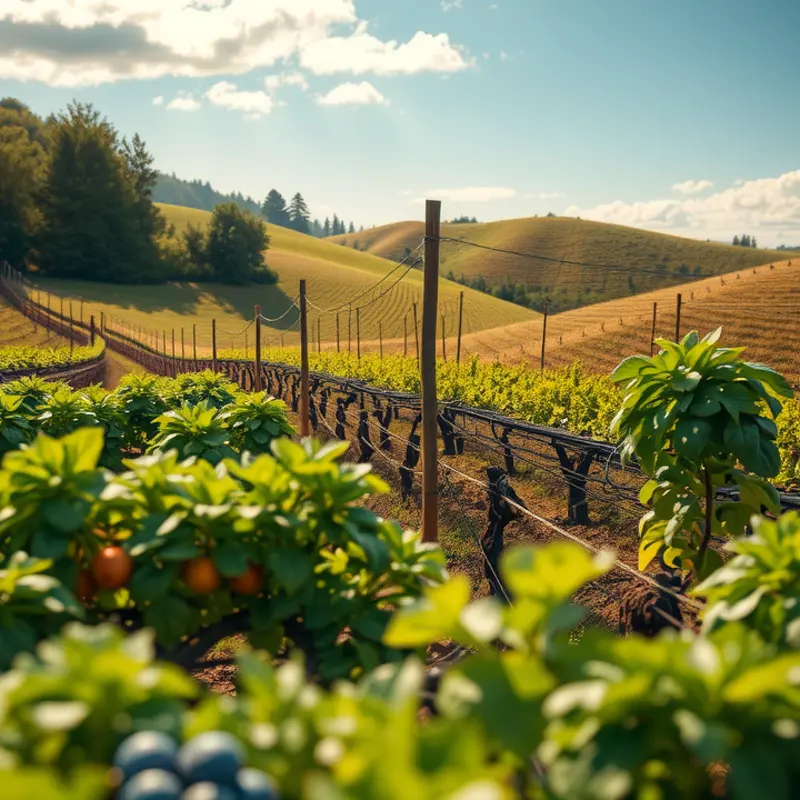Exploring eco-friendly meal choices can significantly reduce your environmental footprint, particularly when it comes to water conservation. Agriculture is one of the largest consumers of water, so choosing water-efficient ingredients and cooking methods is vital for promoting sustainability. This guide empowers environmentally-conscious individuals to make informed food choices that not only nourish the body but also honor the planet’s most precious resource—water.
Embracing Plant-Based Meals for Water Conservation

Transitioning to a plant-based diet is not only beneficial for your health but also instrumental in conserving water resources. Producing plant-based foods generally requires significantly less water compared to meat and dairy, making it a sustainable choice for the environment.
When it comes to water-efficient crops, beans, lentils, and grains stand out. These staples are packed with nutrients and have minimal water footprints. Legumes, for instance, are a powerhouse of protein, fiber, and essential vitamins. They are versatile and can be used in a myriad of recipes, transforming them into hearty and satisfying meals.
Lentils are particularly noteworthy. Growing them requires less water than most crops. They are also rich in protein and iron, making them an excellent substitute for meat in various dishes. Try incorporating lentil-based recipes like a warm lentil salad with roasted vegetables, featuring seasonal greens to maximize freshness and reduce carbon footprint.
Beans also play a crucial role in a water-conscious diet. Black beans, kidney beans, and chickpeas are all nutrient-dense options that thrive with lower water needs. They can be used in soups, stews, or even made into a delicious bean burger, providing a fulfilling meal option.
Grains such as quinoa and barley are other excellent choices. Quinoa, a complete protein source, can be used in salads or as a base for a vegetable stir-fry. Barley, with its nutty flavor, is perfect for soups and risottos. These grains not only enrich the diet but also contribute to water conservation efforts due to their relatively low water requirements.
Additionally, opting for seasonal vegetables supports local farmers and reduces the energy used in transportation. Seasonal produce, such as squash in the fall or asparagus in the spring, provides an eco-friendly approach to meal preparation. Cook them simply with some olive oil and herbs, or mix them into a grain bowl for a vibrant, thirst-quenching meal.
Experimenting with new recipes can make the transition smoother and more enjoyable. A Moroccan vegetable tagine, full of aromatic spices, beans, and seasonal vegetables, makes for a water-saving, nutritious delight. Similarly, a chickpea and spinach curry, accompanied by brown rice or quinoa, offers a wholesome, balanced meal.
For those new to plant-based eating, it’s helpful to start with easy and minimal-preparation recipes. Check out minimal prep dinner ideas for inspiration—these meals are designed to be straightforward and satisfying.
Embracing a plant-based lifestyle is a profound step towards a more sustainable future. By choosing water-efficient crops and engaging with diverse recipes, you not only nourish your body but also contribute to the conservation of our planet’s vital water resources.
Water-Wise Cooking Techniques to Complement Your Diet

Exploring efficient cooking methods leads us to techniques that honor both flavor and water conservation. Traditional methods often waste water and energy, yet steaming, pressure cooking, and smart reuse of resources present eco-friendly alternatives.
Steaming is a crucial method that not only retains nutrients in vegetables but uses minimal water. You can steam an array of vegetables and proteins using just an inch of water and some simple equipment. This method enhances the natural flavors of your ingredients. The water that remains post-steaming can be transformed into a flavorful broth, ideal for soups, thus fully utilizing resources.
Pressure cooking presents another efficient technique, drastically reducing the cooking time and conserving water. A pressure cooker uses steam to cook food quickly, ensuring you need only minimal liquid. The rapid cooking process locks in nutrients and intensifies flavors, making it perfect for cooking legumes and tough cuts of meat.
Reusing residual water from vegetable washing and cooking can also be an insightful strategy to cut down on water waste. The nutrient-rich water from boiled vegetables can double as a broth base for future meals. This practice not only saves water but also enhances flavors in your dishes.
Batch cooking and meal prepping contribute significantly to maintaining a water-efficient kitchen. Cooking in bulk allows you to use water and energy efficiently, preparing multiple meals at once. This technique limits water usage to essential cooking processes and reduces the frequency of cleaning, which often requires substantial water.
A practical recipe incorporating these methods involves a simple yet flavorful vegetable and legume stew. Begin by steaming seasonal vegetables such as carrots, broccoli, and bell peppers until they are just tender. Set aside the steaming water for later use.
Next, use a pressure cooker to prepare a base of lentils or chickpeas, which are rich in protein and sustain you for longer periods. Add aromatic spices and utilize the saved steaming water to create a vibrant broth base.
Combine the pressure-cooked legumes with the steamed vegetables. Allow the flavors to meld over low heat, using any remaining broth to adjust the consistency.
Taking steps to conserve water in the kitchen mirrors effective practices in other areas. For instance, eco-smart kitchen storage emphasizes reducing waste, much like meal prepping and batch cooking enhance water conservation.
Each meal choice and cooking technique contributes to a broader effort of sustainable living. Opting for methods that wisely use water resources supports global efforts toward sustainability, ensuring that delicious meals do not come at the expense of essential natural resources.
Final words
By consciously choosing plant-based foods and employing water-wise cooking techniques, we can significantly lower our water footprint while enjoying nutritious and delicious meals. Embracing these practices not only benefits our individual health but is also a crucial step towards a more sustainable future. Each meal represents an opportunity to make a positive environmental impact; understanding which foods and cooking methods conserve water is the key to fostering a healthier planet. Remember, every small effort counts, and together, we can create a ripple effect of change.








